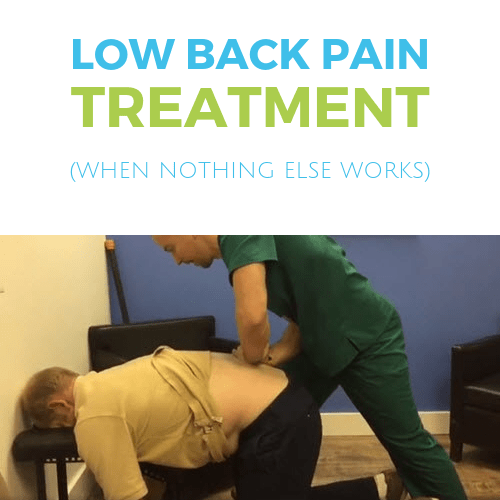
05 Sep Low Back Pain Treatment When Nothing Else Works
Finding a low back pain treatment that works for you when you’ve been dealing with an annoying, frustrating, nagging ache in your low back for weeks, months, or even years becomes like finding the Holy Grail.
You focus most of your daily energy on studying, researching, and maybe even trying out solutions because if you find a low back treatment that works, you’ll get your life back.
Young (or lucky older) people who haven’t had debilitating low back pain don’t realize how badly it can affect one’s quality of life.
So instead of throwing spaghetti at the wall, let’s start to intelligently think through what is going on with your low back pain before we go and decide where to look for the Holy Grail Low Back Pain Treatment that works for you so you can be happy again.
Then, we can discuss a secret problem that can offer you very high odds of the relief you’ve been seeking when you seek out a specialist to remove it.
The Major Problem with Conventional Low Back Pain Treatment
Most low back pain advice is generally meant for a group of people.
The researchers are trying to help as many people in a group as possible without specifically selecting what types of problems can be fixed with the currently selected types of solutions.
The major problem with conventional low back pain treatment is that it isn’t meant for you, an individual. It’s meant for a group of people.
Because you’re an individual with individual problems that add up to make your low back pain, I wouldn’t be comfortable gambling on any low back pain treatment to help you find relief.
My lack of confidence on gambling doesn’t mean you shouldn’t try these treatments before larger investments in your low back pain, though.
A June 2018 systematic review of chronic pain revealed many low back pain treatments that offered small improvements in low back pain and function for at least 1 month after treatment (evidence lasting beyond 1 year was sparse).
Below is a list of those therapies and techniques with my questions for you in italics to help you pinpoint whether that possible solution may be worth your time, energy, and money.
Are you sedentary? Do you lack a well-rounded exercise plan, indicating that you may be weak in a body region? Are you unable to do 15 Good Mornings with a 15 pound body bar across your back? If you answered “Yes”, the following interventions may work for you:
- exercise
- multidisciplinary rehabilitation (MDR)
- yoga
Do you notice that when you’re stressed, triggered, or anxious, your pain increases? If you answered “Yes”, the following interventions may work for you:
- psychological therapies (primarily cognitive behavioral therapy [CBT])
- mindfulness-based stress reduction
- acupuncture
Are you under the age of 40-50, meaning that you don’t have a high level of spinal degeneration (or wear-and-tear)? If you answered “Yes”, the following interventions may work for you:
- spinal manipulation
Do you have a disc problem (most chronic low back pain patients do)? If you do, the laser can only penetrate 3 cm (or 1.2 inches) deep. Your disc is more than 8 cm (or 3 inches) deep and is blocked by the back of your spinal bones. There’s 0% chance for a laser (or ultrasound, heat, electronic stimulation such as a TENS unit, or ice) to help a disc problem. If you answered “No”, the following intervention may work for you:
- low-level laser therapy
Do your muscles get tight when you move in a specific way? i.e. When you touch your toes or when you turn your head? If you answered “Yes”, the following interventions may work for you:
- massage
If you have tried any of these low back pain treatments or want to try them and find relief, it’s time to throw a party!
So many people with pain don’t find relief. If you do, count your blessings and do what is working for you.
If these haven’t worked, keep reading.
Have You Heard of A Secret Problem Called Adhesion?
At Barefoot Rehab, your local expert chiropractor in Denville, NJ, we specialize in fixing your pain when it’s been over 6 months and you’ve seen 3-5 other doctors or therapists (with at least 3-5 different treatments) with no to minimal relief.
You might be wondering:
What could you possibly be doing to help these people who no one else has been able to help?
The beautiful thing about time and innovation is that new problems and new treatments arise where none existed before.
You’ll be happy to know that there is a small, but growing group of doctors who found a secret problem in the body that seems to be the most common problem causing pain that won’t go away.
It’s called adhesion.
Dr. Brady of Integrative Diagnosis describes what adhesion is below.
Adhesion forms when you have a trauma (i.e. you get surgery and can visualize adhesion in the form of “scar tissue” or get a muscle tear – see #1 below) or more commonly, when you overuse your muscles, ligaments, tendons, and nerves, causing micro-tears in muscles (see #2 below).
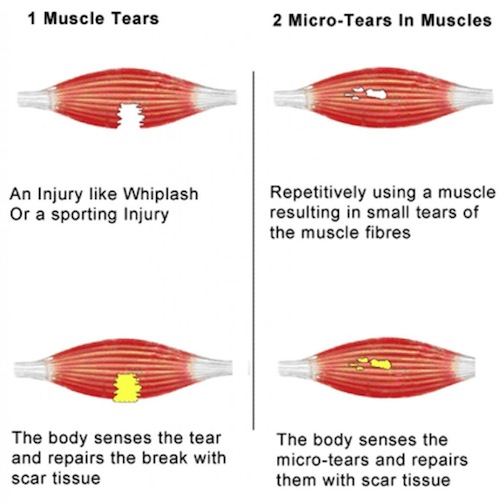
An adhesion specialist uses:
- flexibility tests to determine if there might be adhesion in the muscles that are stretching.
- his hands to confirm that adhesion is in fact present.
- his hands or a metal instrument to tear the adhesion out.
The most important, sophisticated, and expensive (now, I’m just being sarcastic) flexibility test to confirm a low back problem such as adhesion is the Pencil Test.
All it requires a 5 cent pencil ruler.
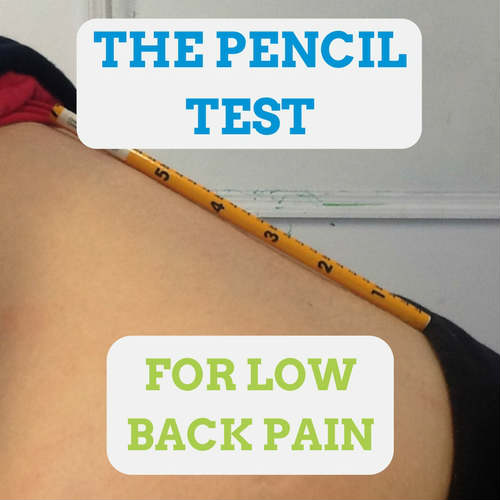
This post goes into depth on the different grades of the Pencil Test and also shows you the Lunge Stretch Test to assess psoas/iliacus adhesion.
Below, I assess a live patient’s Pencil Test.
After the adhesion specialist finds a restriction in the Pencil Test, he uses his hands to feel if adhesion is present or if it’s a disc/spinal problem warranting an MRI.
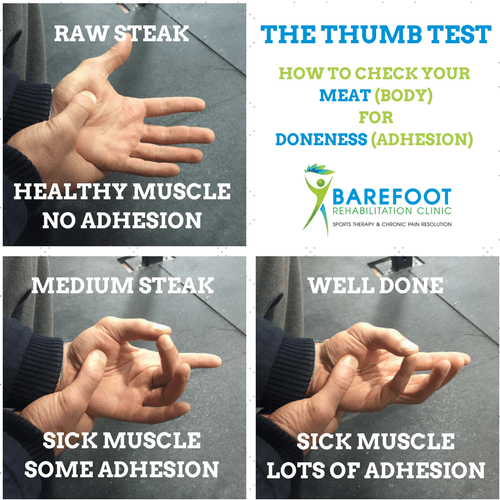 Then, the adhesion specialist sees if the low back muscles are pulling tight.
Then, the adhesion specialist sees if the low back muscles are pulling tight.
Here, I show you how I remove adhesion (and most importantly, why this is very different than massage or other soft tissue techniques).
The actual treatment looks like this.
That’s for the muscles on the back of the spine.
On occasion, the muscles on the front of the spine (the psoas) need to be treated. For that, an assistant is needed.
95% of patients who we are able to help will respond to this type of treatment within 5 visits or less.
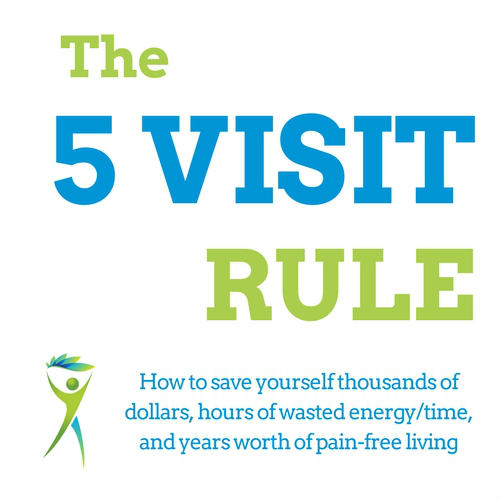
“Responding” means having some permanent level of relief (whether 10% relief or 50% relief), no matter how long someone has been in pain.
The 5% of patients who we do help but who don’t respond in 5 visits or less are putting significantly more stress on their discs than they should be, completely ignoring pain signs.
Ignorance, like most of life, is a big no-no.
Do You Have an MRI That Shows Moderate to Significant Degeneration?
While fixing hard cases is our specialty at Barefoot Rehab, we are far from fixing everyone who walks through our doors.
The smaller the problem (or the less the degeneration) in your low back, the more likely any low back pain treatment you picked for yourself will work.
The bigger the problem (or the more severe the degeneration), the more likely you are to be left frustrated and annoyed that you’re still dealing with your pain.
The #1 reason why we don’t fix people is that the level of degeneration or wear-and-tear they have in their spine (as confirmed by an MRI) is severe.
The most common example of degeneration is a bulging disc.
Visualize how a disc wears-and-tears through the stress you put on your body put imagining the jelly moving through the outer portion of the disc.
When you have degeneration, the most important thing you can do to stop your pain and slow the wear-and-tear down is to become aware of the activities and postures you do that make your pain worse.
It often surprises me how often people notice that they won’t work out and they’ll wake up with no low back stiffness or achiness the following morning.
Then, they’ll do a workout and wake up with low back stiffness or achiness, a low-grade fire alarm going off.
Here’s the bad part.
They’ll continue doing that workout for YEARS!
That mild stiffness after the workout is a form of overload on your disc/spine that is speedening up the level of wear-and-tear in your low back.
This is a precise example of how you can pay attention to be picky when it comes to:
- the workouts you do
- the chairs you sit in
- the postures you maintain (io.e.laying down or sitting while watching TV).
The more you notice what gives you ANY low back symptoms, the more you’ll be able to determine which movements, activities, and postures are putting stress on your poor little discs and spine.
It’s Not Hopeless Until You’ve Gotten Checked for Adhesion
When nothing else has worked, there are a small number of adhesion specialists who are growing their numbers.
It’s not uncommon for patients to travel from Pennsylvania, Connecticut, or New York to see us at Barefoot Rehab in Denville, NJ.
Don’t take my word for it.
You can check out our 70 5-star reviews on Facebook.
Or the 38 5-star reviews we have on Google.
Adhesion removal is an innovation to healthcare that has only sprouted up in the past 10-20 years.
In 50 years, everyone will know what adhesion is.
But our culture isn’t there yet.
What you need to take home is that this adhesion stuff may be what’s preventing you from finding the relief you want.
Adhesion removal may be your Holy Grail.
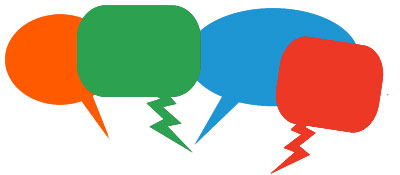 I’m curious, what low back pain treatment has worked for you? Or if you’ve had multiple treatments, which ones worked a little and which ones worked a lot? If you want to share your low back pain problems, please measure your Pencil Test before asking me for my thoughts.
I’m curious, what low back pain treatment has worked for you? Or if you’ve had multiple treatments, which ones worked a little and which ones worked a lot? If you want to share your low back pain problems, please measure your Pencil Test before asking me for my thoughts.

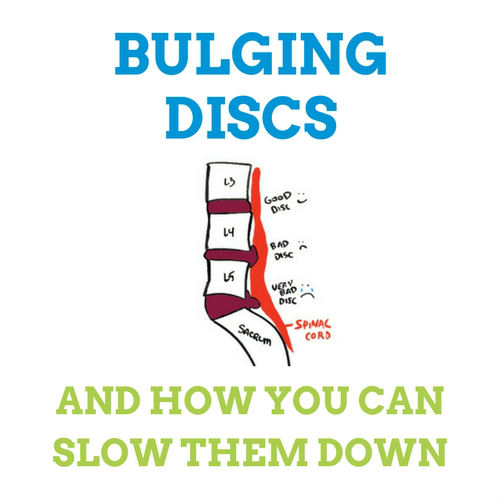
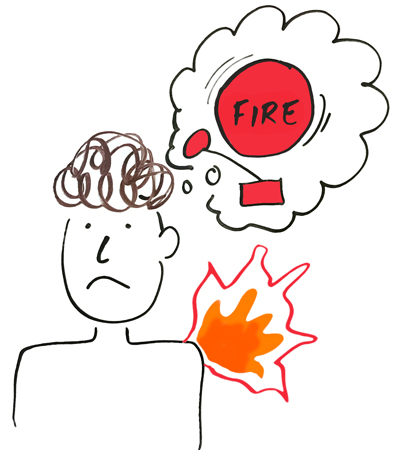
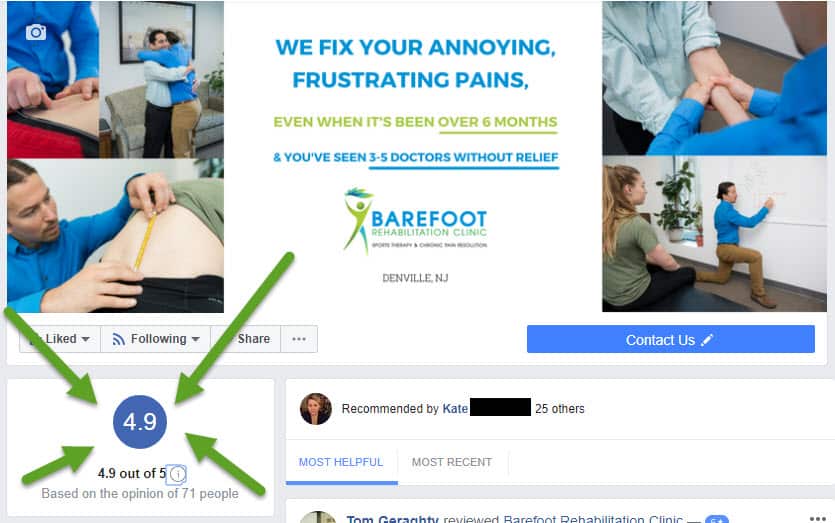
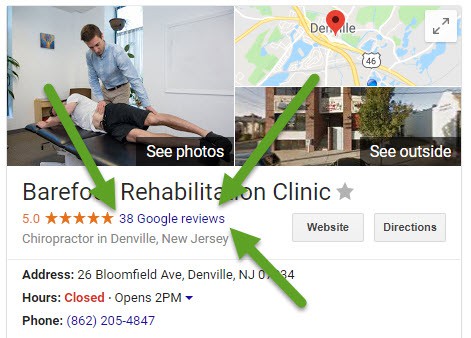
c smythe
Posted at 05:25h, 01 Augustheard it all before, just another quack . . .
Dr. Chris
Posted at 21:57h, 01 AugustWell you son of a b____ SMYTHE !!!!!
This is what happens when your college friends comment on your professional work page.
LOL
Tea "advancedpain.com" Bautista
Posted at 19:10h, 03 MarchReading the comments, LOL that’s what true friends are. hahaha Anyways, I have lower back pain not that too much tho. Should you suggest me doing yoga at home? Probably I got the lower back pain from the way I sit in front of the computer.
Dr. Chris
Posted at 15:27h, 04 MarchYou can try yoga and strengthening and see it helps after 4 weeks.
Leah
Posted at 11:22h, 23 SeptemberHello, I have had chronic low back pain for about 3yrs now. Started gradually but now is constant and severe. I have tried PT, chiropractor, acupuncture, psychotherapy and meds, PRP injections, trigger point injections, nerve block and hydrodissection injections, MRI, X-ray, massage, craniosacral, heat/ice, anti-inflammatories, walking, everything, but nothing will take the pain away. I don’t know what to do anymore – what would you suggest?
Dr. Chris
Posted at 18:30h, 28 SeptemberHi Leah, so sorry to hear about your pain. Seems you still left one stone unturned. HOW MUCH ADHESION DO YOU have? https://integrativediagnosis.com/find-an-id-provider/
We have many people fly in from across country. LMK
Sick of it
Posted at 01:41h, 17 OctoberNothing has worked. I’m so drugged, I can’t move for more than a few minutes. I can sit and that’s it. II’s been 25-30 years. I’m 67, constantly hear from doctors that I’m too fat, but they give no thought that I can’t move. I’m currently eating about 500 calories a day because if I eat 1000, I gain wait. This pain is slowly killing me. I wish it would hurry up.
Dr. Chris
Posted at 19:04h, 17 OctoberI’m so sorry to hear this. Do you have a plan to get your health back and get out of pain? If not and you are ready to do what it takes to heal, feel free to schedule a call with one of our patient advocates. Dr. Chris coaches individuals privately who want to get out of pain. Just contact the office.